
Today, content marketing is an essential part of scalable growth. As a marketer, you know this already.
But how do you get started? There is no shortage of tips on marketing blogs. The problem lies in putting these tips into practice for your brand.
If you’re a marketer who often finds themselves saying “easier said than done,” then this roundup is for you.
In this article, we have collected 10 startups that
have done it. They slayed their content marketing with a variety of compelling strategies. Use these real-life marketing examples as inspiration for your next big growth campaign.
1) Opencare
Industry: Healthcare
Tactic used: Referral marketing
Company Story:
Opencare is a platform where you can find and book a dentist—without ever making a single phone call.
To grow into a
multi-million dollar company, Opencare relied heavily on their referral marketing. They created a simple premise: book a dentist, then refer Opencare to someone else, and you both get a $50 gift card. The more people you refer to the platform, the higher your reward.
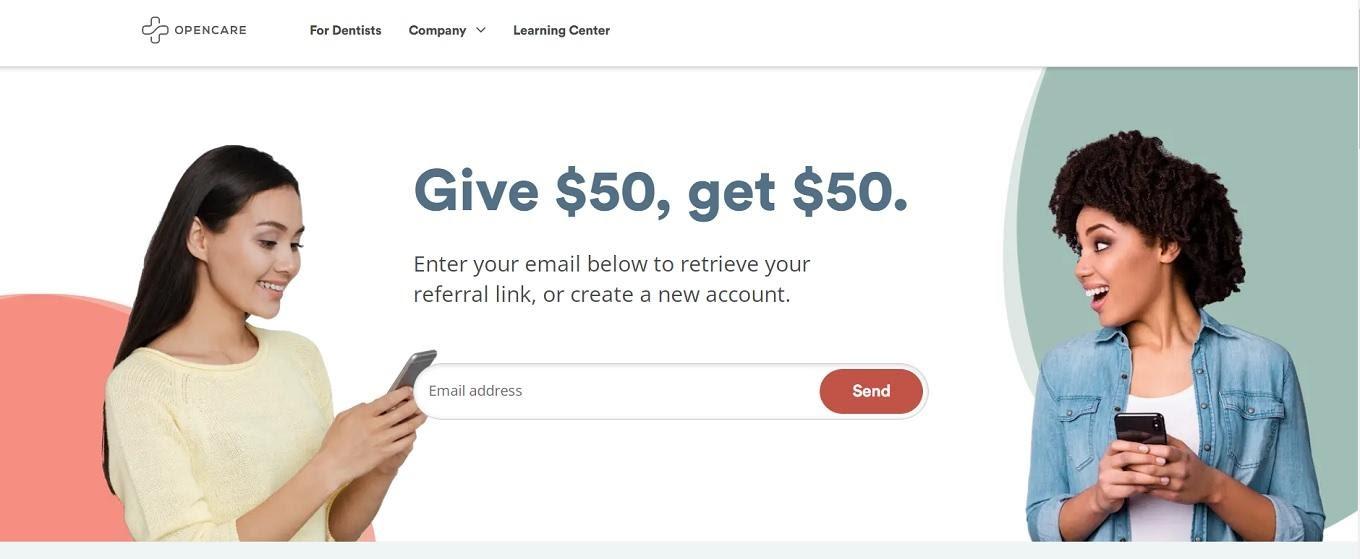 Opencare
Opencare
2) Mint
Industry: Finance
Tactics used: Partnerships with relevant blogs & SEO
Company Story:
Mint is a finance management and budgeting software.
According to Aaron Patzer, CEO of Mint, in the early days, their marketing plan was “whatever we can do, basically for cheap, or for free.”
Sounds familiar?
We’ve all been there.
SEO was the perfect solution. It didn’t require a large monetary investment upfront, so they used SEO almost exclusively. With this strategy, it took them two years to gain 1.5 million users and sell Mint to Intuit for $170 million.
Eventually, they expanded their SEO efforts to include relationship building, as well. They co-branded content with partners, and
even sent them badges to feature on their sites. The badges simply said “I want Mint.” Thanks to this idea, Mint got free advertising and a new influx of inbound links.
 Intuit Mint
Intuit Mint
Takeaways
- Reach out to bloggers in your industry who may be interested in featuring your brand
- As an incentive, send these bloggers badges to stand out on their blog
- Create co-branded content, such as articles or ebooks
- If you have a bit of budget ($1,000 or more), consider sponsoring an industry event
- Set up and run a Facebook group together
- Use SEO from the start to establish yourself as an authority
3) Copy.ai
Industry: Artificial Intelligence / Marketing
Tactic used: Community building
Company Story:
Copy.ai is an Artificial Intelligence tool that writes marketing copy for you. Paul Yacoubian and Chris Lu launched it on Twitter, and then continued to grow their user base through the same social platform. Their tactic?
#buildinpublic
This hashtag, popular in SaaS circles, means that you share the most intimate details of your startup’s growth. This includes talking about features you’re working on, mistakes you made and wins you had.
It’s a bold, revealing strategy that may scare away some CEOs at first. The key? Stick to it, keep providing updates, and you will begin to attract users who want to be part of your story.
Copy.ai now has 500,000+ users and has recently secured an
$11M Series A round from multiple investors.
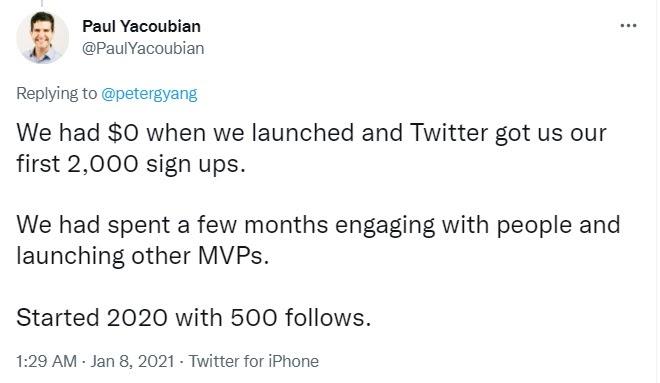 Twitter
Twitter
Takeaways:
- Establish a company leader to be the “face” of your startup, such as your CEO or CMO and start posting updates on Twitter about your startup’s progress
- Use hashtags like #buildinpublic #saas #startup #nocode #lowcode #growthhacking #marketingtwitter to stand out
- You can also submit your SaaS to ProductHunt, just like Copy.ai did (announce that on social media, too)
- As for your content, it’s best to share product launch announcements, polls, product updates, promotions, and personal replies to users (here’s copy.ai’s basic growth chart broken down by Paul’s Twitter activities)
- Best platforms for building in public: Twitter, LinkedIn, Facebook groups
- Don’t forget to thank your supporters and re-share their posts from time to time, as well
4) Halo Top Creamery
Industry: Desserts, food
Tactic used: Advanced Instagram visual marketing
Company Story:
Halo Top Creamery is an ice cream company that is absolutely acing it on
Instagram. Why? Even when they’re not posting about their products, you can still easily identify the brand in your feed, thanks to their color consistency and unique designs.
Their 628,000 followers agree.
The pastel purples and pinks go well with any dessert and the consistent usage nurtures brand recognition. Did you know that inconsistent branding can cost you about
10-20% in revenue?
For example, Halo Top knows that their target audience watches Bridgerton.
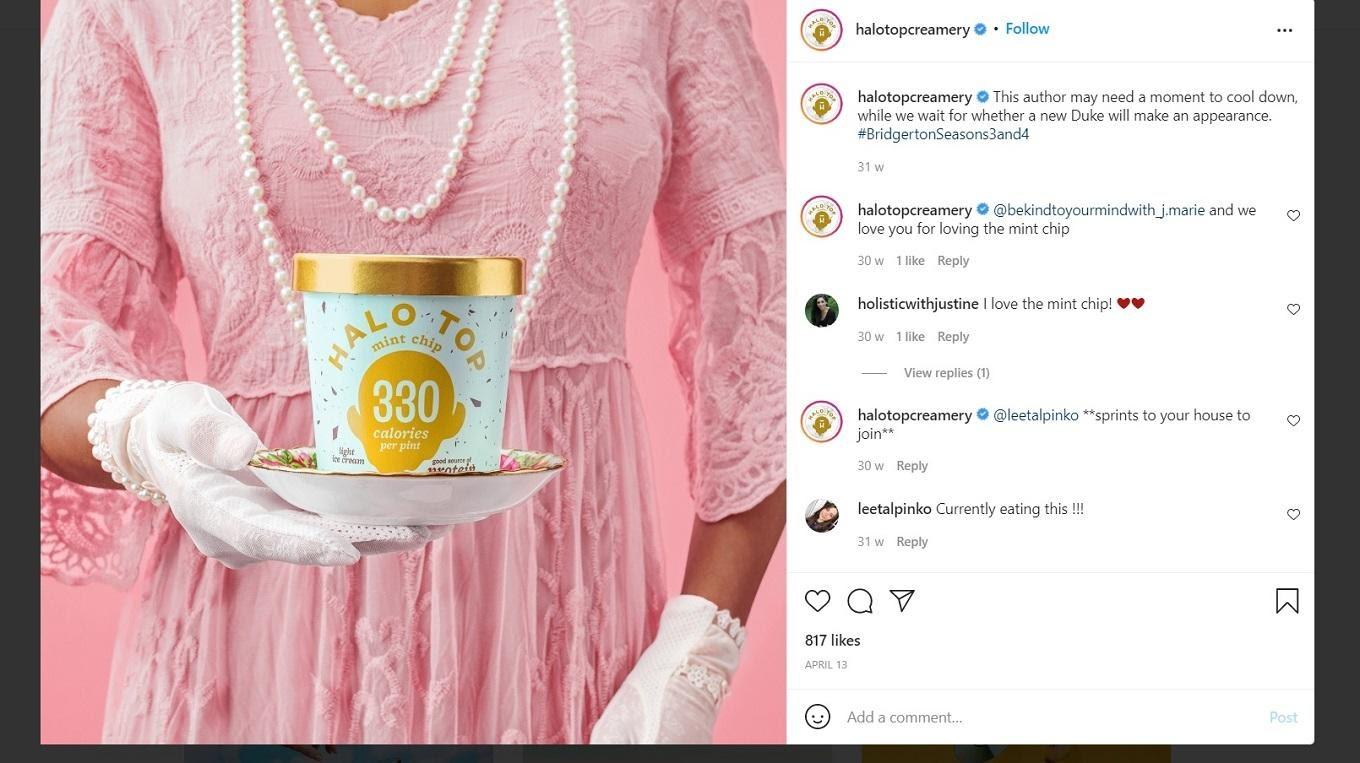 Halo Top Creamery Instagram
Halo Top Creamery Instagram
Takeaways
- Establish 3-4 main colors for your brand and stick to them throughout your content marketing channels (your Instagram, website, ads, and even videos)
- Use your colors even when you’re not posting a product-related image
- Use unique design techniques
- Create a monochromatic strategy to make your Instagram pop
- Beyond your brand, use color psychology in other areas of your marketing, too
5) David’s Tea
Industry: Beverages
Tactic used: Promote interaction with customers
Company Story:
This tea maker is one of the biggest on the market. Still, they find the time and resources to respond to each and every customer comments on their social channels, but especially on Instagram.
Their customer-oriented approach pays off big time. According to
Phlanx, they scored an engagement rate of 0.55%, which is a great score (for comparison, Republic of Tea scored 0.30% and Rare Tea Company scored 0.36%).
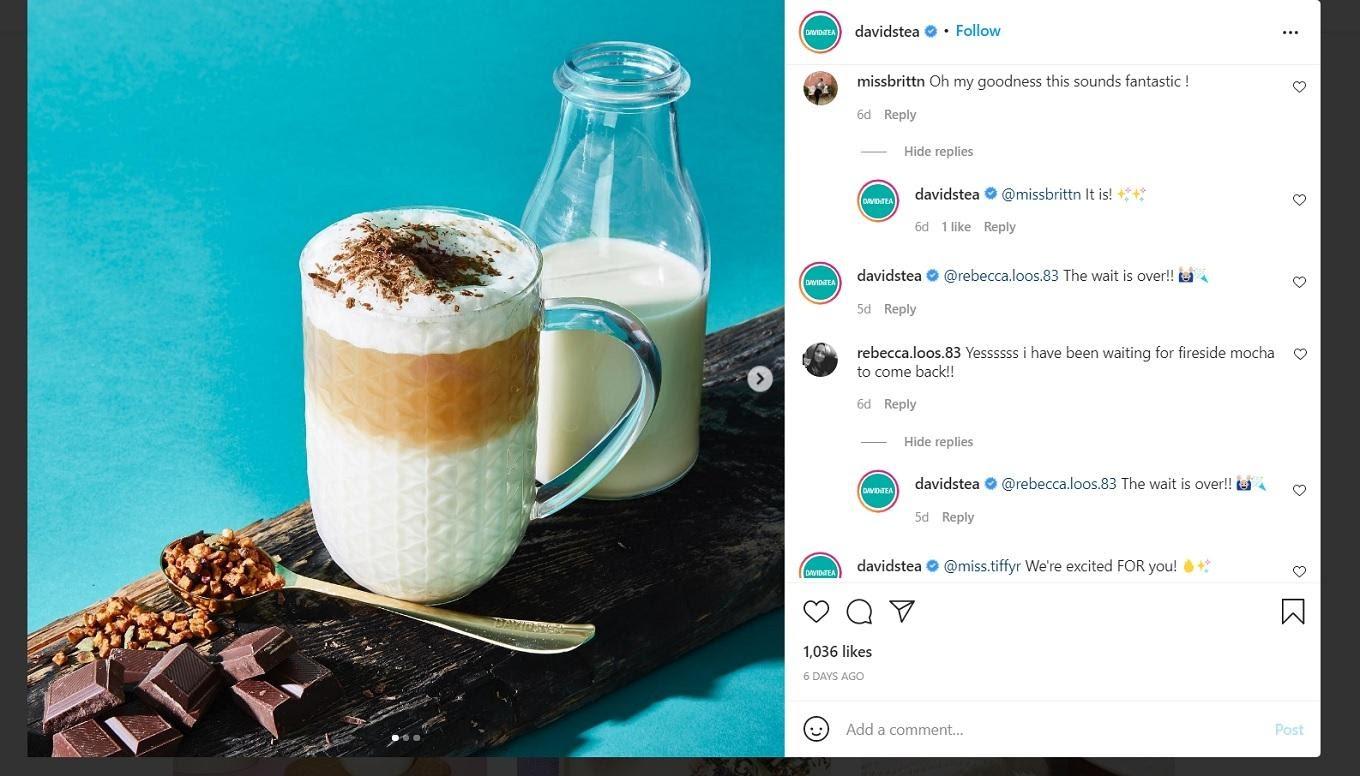 David's Tea Instagram
David's Tea Instagram
About
83% of customers expect a response from companies on social media. 18% of them expect to see a response immediately, while 37% hope for a response sometime that day.
Make responding to customer comments on your posts part of your customer service. This simple gesture can deepen your fans’ love of your brand and make them feel seen.
6) Lemlist
Industry: Marketing
Tactic used: LinkedIn content marketing
Company Story:
Lemlist’s story is one-of-a-kind. The startup grew
from 0 to $150M valuation in just 3.5 years without the need for external funding. They actually
turned down a $30 million offer one time.
Their tactic? One word: LinkedIn.
Lemlist’s CEO and co-founder exclusively used LinkedIn to document the company’s journey from the beginning. He shared their setbacks and wins and built a thriving community around the brand. Today, he has a LinkedIn following of 22,000 where he continues to expand their “lempire.”
Relying on organic growth is wildly successful for them.
They spend $0 on ads on LinkedIn, and yet,
reach 100,000+ professionals per week by activating each stakeholder to post about different value-added topics.
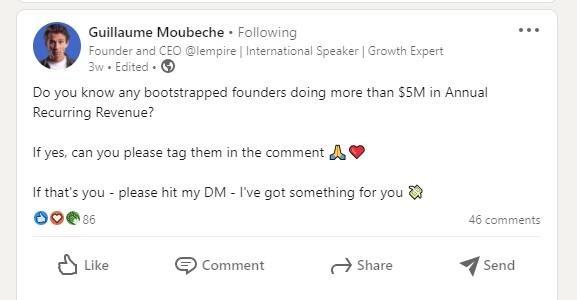 LinkedIn
LinkedIn
Takeaways:
- Regularly create content on a social media platform like LinkedIn — either share your growth journey or cover topics relevant to your audience
- You can even ask for leads straight out (see the screenshot of Guillaume’s post above)
- Get your employees and stakeholders involved: make it a weekly task for them to publish at least one informative post in support of your product
- Cultivate organic growth by establishing a strong community around your brand from the start
- Optimize your LinkedIn profile so that it does the selling for you
7) Chubbies
Industry: Clothing
Tactic used: Email marketing + brand tone
Company Story:
Chubbies is a shorts and apparel company that takes branding to the next level with their content.
They are not just selling shorts. Their copy hones in on that “Friday at Five”
feeling throughout: it’s light, casual, and bro-y without being annoying.
Chubbies knows their target market well. They also have an email newsletter that furthers their positioning even more. For example, every Friday evening, they send out an email to get their customers excited for the weekend (and for wearing shorts).
This strategy has amassed an email list of
1.5 million subscribers so far.
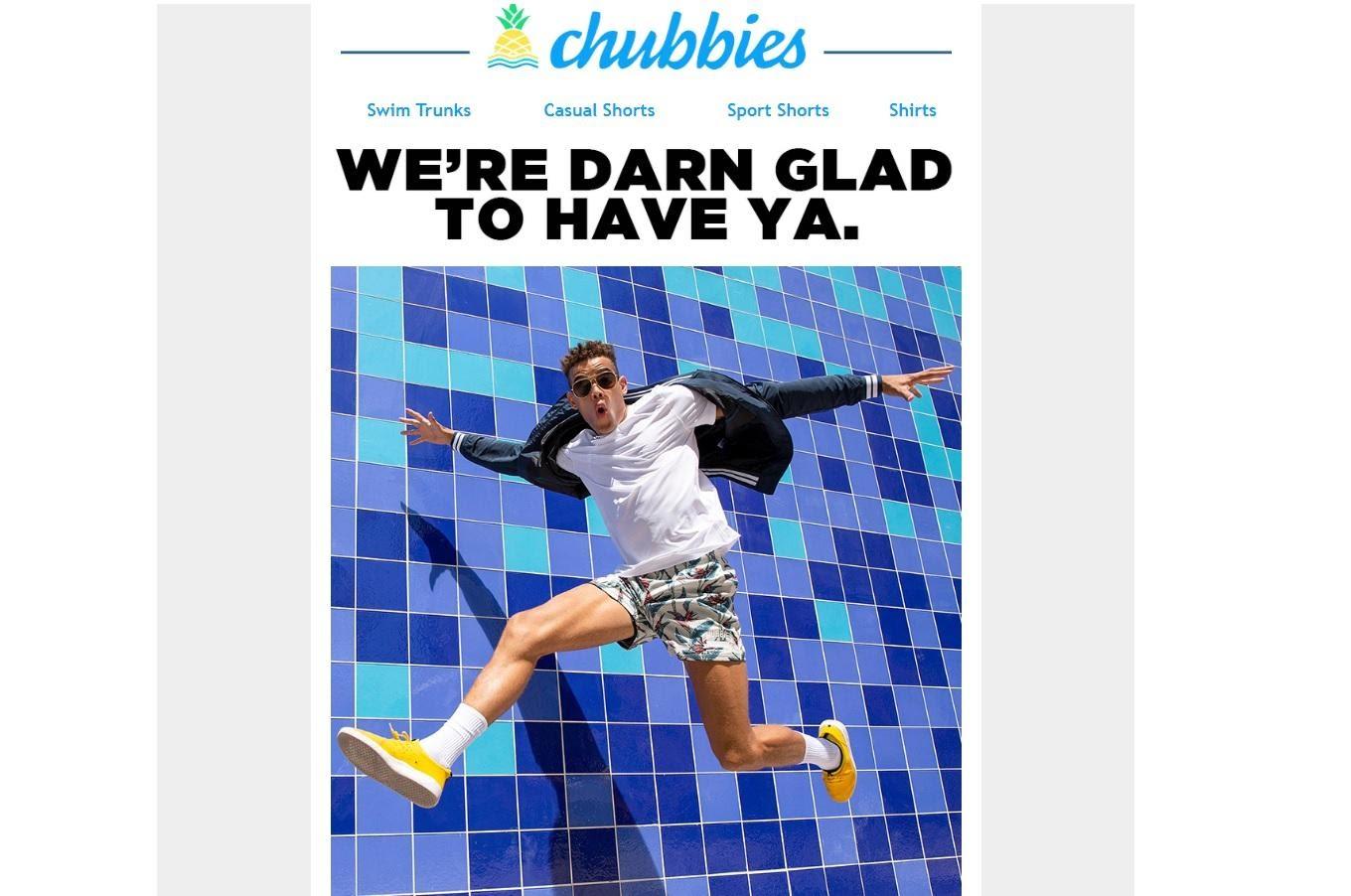 Chubbies email list
Chubbies email list
Takeaways
- Once you’ve created a brand tone, stick with it in all of your content marketing
- Connect your product with things your customers like to do and focus your communication around these activities (Hiking? Netflix? Decoupaging? Beer Fridays? You get the idea)
- You can have the best, most creative newsletter in the world, but it’s worth nothing unless people know about it — create an email popup to act as a lead magnet on your website
- If you’re going for a quirky tone like Chubbies, ensure you have the same whimsical feeling to your email sign-up and unsubscribe pages, too
8) MOZ
Industry: Digital marketing
Tactic used: Video marketing
Company Story:
MOZ was started in 2004 by Rand Fishkin and Gillian Muessig. While their free guides like “The Beginner’s Guide to SEO” or the “Search Ranking Factors” study helped put them on the content marketing map, it was their Whiteboard Friday series that amplified their reach the most.
Whiteboard Fridays are weekly videos where you are presented with an SEO strategy with a detailed, step-by-step walkthrough. In the beginning, Rand Fishkin was the only host, then various MOZ and non-MOZ SEO professionals started hosting, as well.
The series quickly became a staple to the brand and to the digital marketer community, as well. In 2016, average views were about
15-20,000 per video. Today, they have accumulated millions of views. The branding is so strong that they rank on page 2 for the single keyword “whiteboard.”
Their secret?
TAGFEE. It’s an acronym for being Transparent, Authentic, Generous, Fun, Empathetic, and Exceptional.
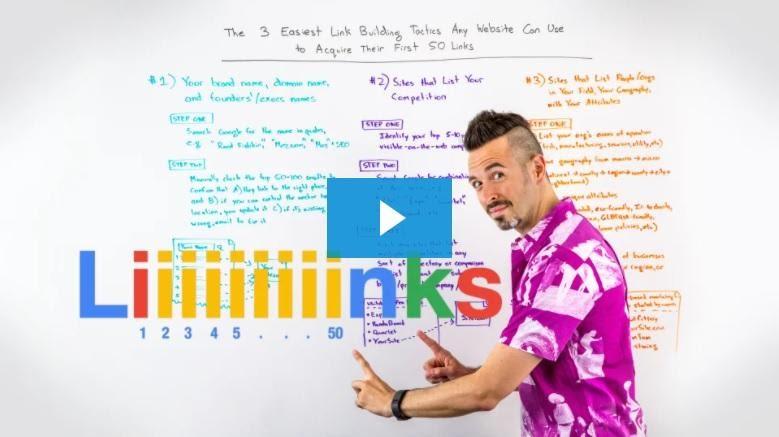 MOZ
MOZ
Takeaways:
- Stick to a schedule — it took 2-3 years before the average Whiteboard Friday outperformed the average MOZ blog post
- Build a personal brand around your video efforts (Rand’s passion is half of the Whiteboard Friday success)
- Dedicate a landing page with a transcription and commenting availability to reap the additional SEO benefits from your videos
9) Design Pickle
Industry: Graphic Design
Tactic used: Guest blogging
Company Story:
When you’re in the service industry, you often have to growth hack your way to success. This is why Design Pickle, a design agency, scaled from 0 to 1,200 customers with guest blogging.
Here’s a guest article done right from 2015 (a year after the company’s launch) by Design Pickle founder, Russ Perry.
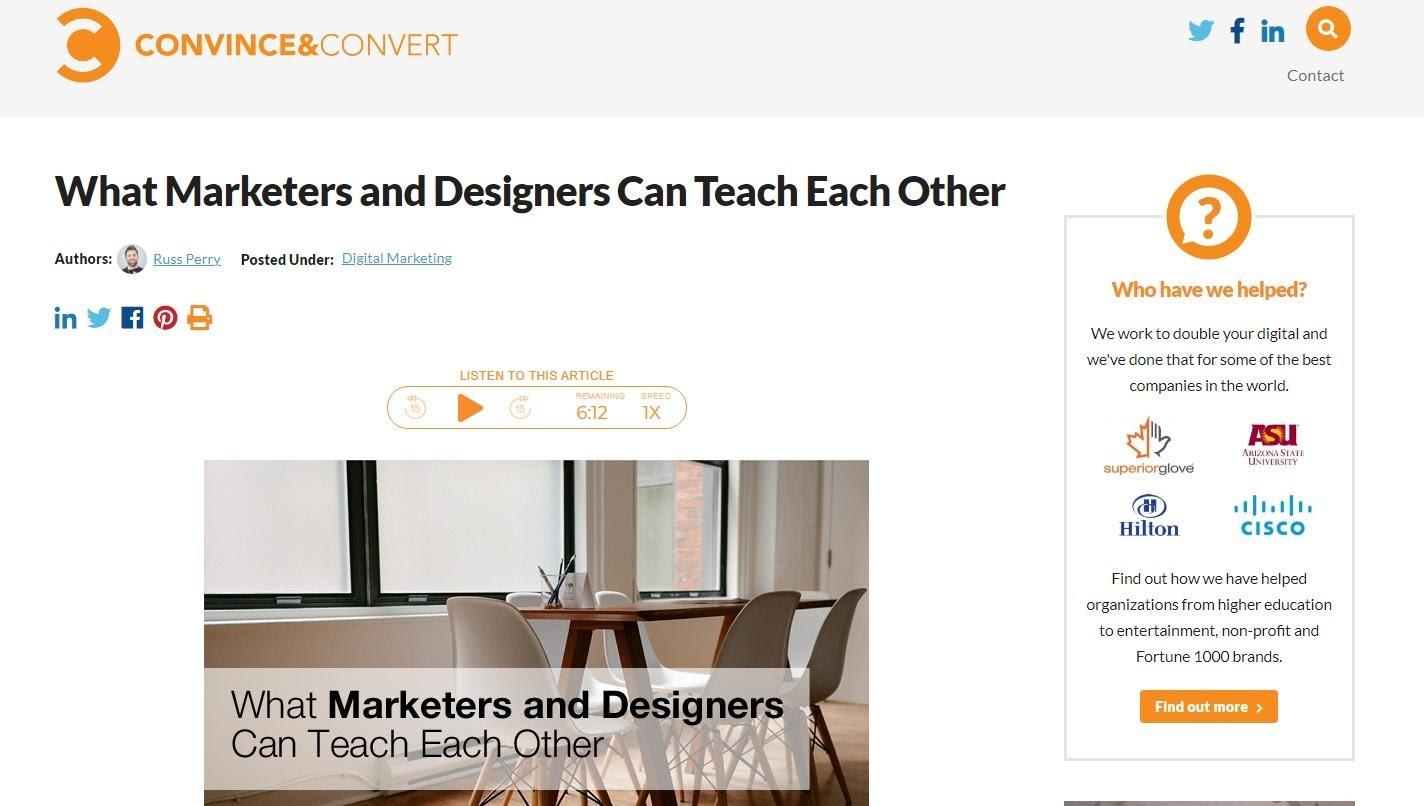 Convince & Convert
Convince & Convert
Guest blogging is a great example of how content marketing can have a compound effect on brand building. The more value-added content you have on your website
and on other sites, the more knowledgeable your brand appears.
While the ROI for guest blogging is hard to pinpoint, according to Luca Tagliaferro’s small survey, about
39% of guest bloggers use it to further their brand.
Takeaways
- Join Facebook, Slack, or Discord groups to find blog owners in your industry who are up for some guest blogging
- Google industry name + “write for us” to find relevant high-DA websites for guest blogging opportunities (for example recipe blogs “write for us”)
- Monitor your content marketing analytics to see how your traffic changes after acquiring some inbound links
- Go beyond guest blogging: establish a good relationship with blog owners by being responsive and helpful
10) Airbnb
Industry: Hospitality
Tactic used: Content hubs
Company Story:
Airbnb wasn't always the billion-dollar business that it is today. The startup’s humble beginnings date back to 2008. The founders started out by personally going door-to-door to try and convince people to list their homes on the platform.
Eventually, they turned to content marketing. While they run different campaigns and projects, the
Airbnb Neighborhoods project, which they started in 2012, remains their flagship marketing tactic.
The idea behind it is that guests can make better decisions about where they want to stay by getting to know a neighborhood before their arrival. The Neighborhoods projects are nothing more than simple landing pages that feature things to do in the area using through a multitude of resources:
- Photos
- Videos
- Comments and reviews
- Maps
- Categories of activities
- Places to stay
Why is it wildly successful?
According to a
recent study, the new generation today yearns for experiences and human connections. Airbnb focuses on creating content that celebrates cultures and traditions unique to the destinations they serve. All of that, without being overly in-your-face salesy and adding the voice of their audience for authenticity (think: comments and tips on the landing pages).
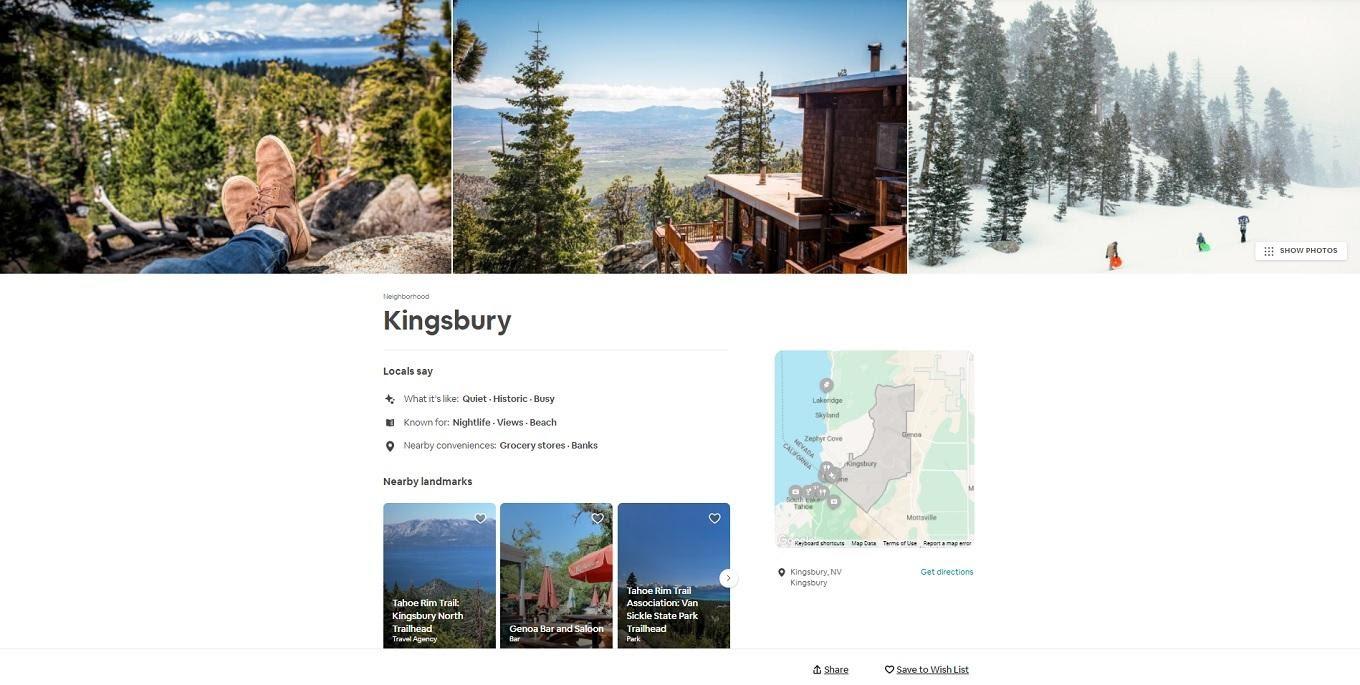 Airbnb Neighborhoods
Airbnb Neighborhoods
Takeaways:
- Think beyond featuring your own products or services in every content you produce — think about how you can be genuinely helpful to potential buyers
- When creating a content hub, make sure to be specific about all the details — you don’t want your visitors to wander over to other publications in search for more info
- Don’t leave out the voice of your audience — add their comments or quotes to your content hubs to generate an authentic feel
It’s Your Turn to Slay Content Marketing!
Every content marketing plan starts somewhere. As you saw in these examples, many brands built their industry-leading content marketing from zero.
Another lesson: focus your efforts on just a tactic or two. You’ll know which tactic is best for your brand once you’ve done some initial market research.
Does your target market like to read blogs? Build your growth around that. Is your brand a natural fit for social media? Start creating awesome social content more frequently.
Your prospects are out there, waiting to find your amazing brand. So, don’t hesitate; it’s time to be the next big thing in content marketing! Opencare
Opencare
 Intuit Mint
Intuit Mint
 Twitter
Twitter
 Halo Top Creamery Instagram
Halo Top Creamery Instagram
 David's Tea Instagram
About 83% of customers expect a response from companies on social media. 18% of them expect to see a response immediately, while 37% hope for a response sometime that day.
Make responding to customer comments on your posts part of your customer service. This simple gesture can deepen your fans’ love of your brand and make them feel seen.
David's Tea Instagram
About 83% of customers expect a response from companies on social media. 18% of them expect to see a response immediately, while 37% hope for a response sometime that day.
Make responding to customer comments on your posts part of your customer service. This simple gesture can deepen your fans’ love of your brand and make them feel seen.
 LinkedIn
LinkedIn
 Chubbies email list
Chubbies email list
 MOZ
MOZ
 Convince & Convert
Guest blogging is a great example of how content marketing can have a compound effect on brand building. The more value-added content you have on your website and on other sites, the more knowledgeable your brand appears.
While the ROI for guest blogging is hard to pinpoint, according to Luca Tagliaferro’s small survey, about 39% of guest bloggers use it to further their brand.
Convince & Convert
Guest blogging is a great example of how content marketing can have a compound effect on brand building. The more value-added content you have on your website and on other sites, the more knowledgeable your brand appears.
While the ROI for guest blogging is hard to pinpoint, according to Luca Tagliaferro’s small survey, about 39% of guest bloggers use it to further their brand.
 Airbnb Neighborhoods
Airbnb Neighborhoods



